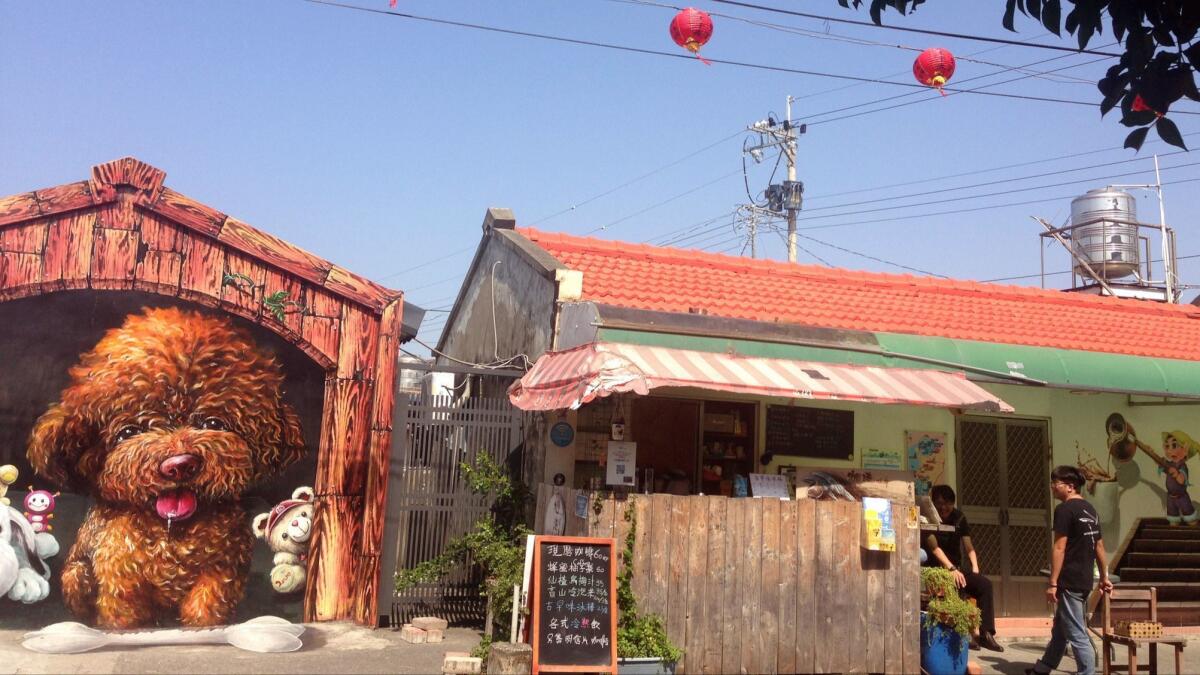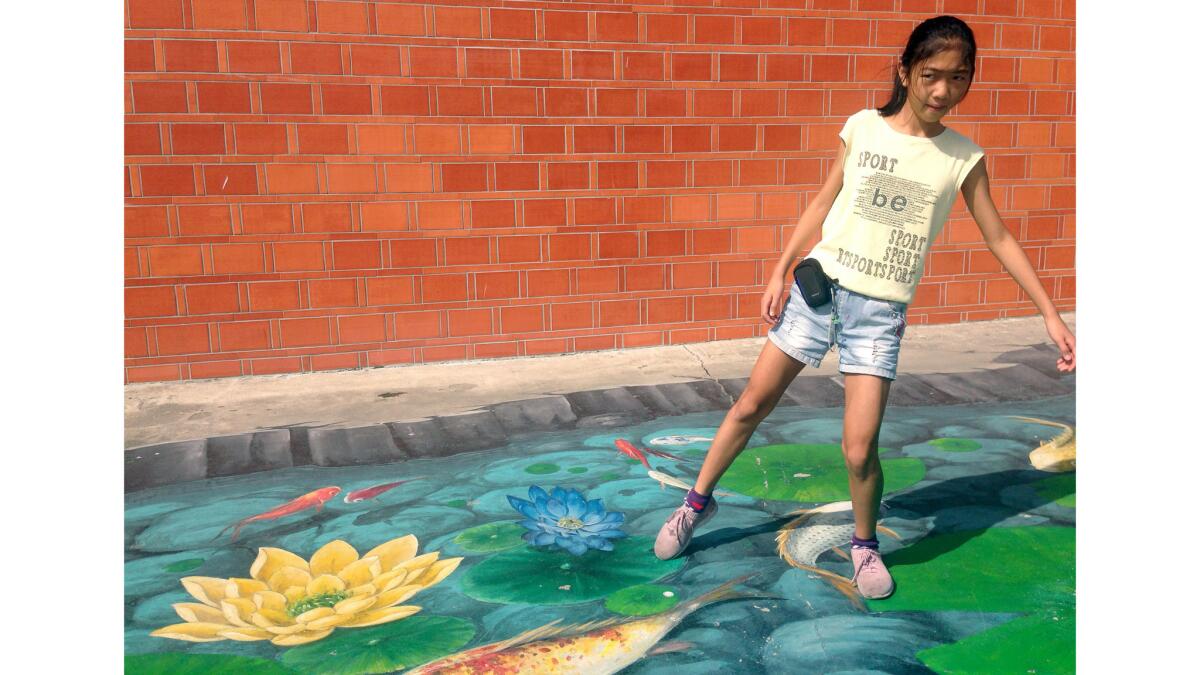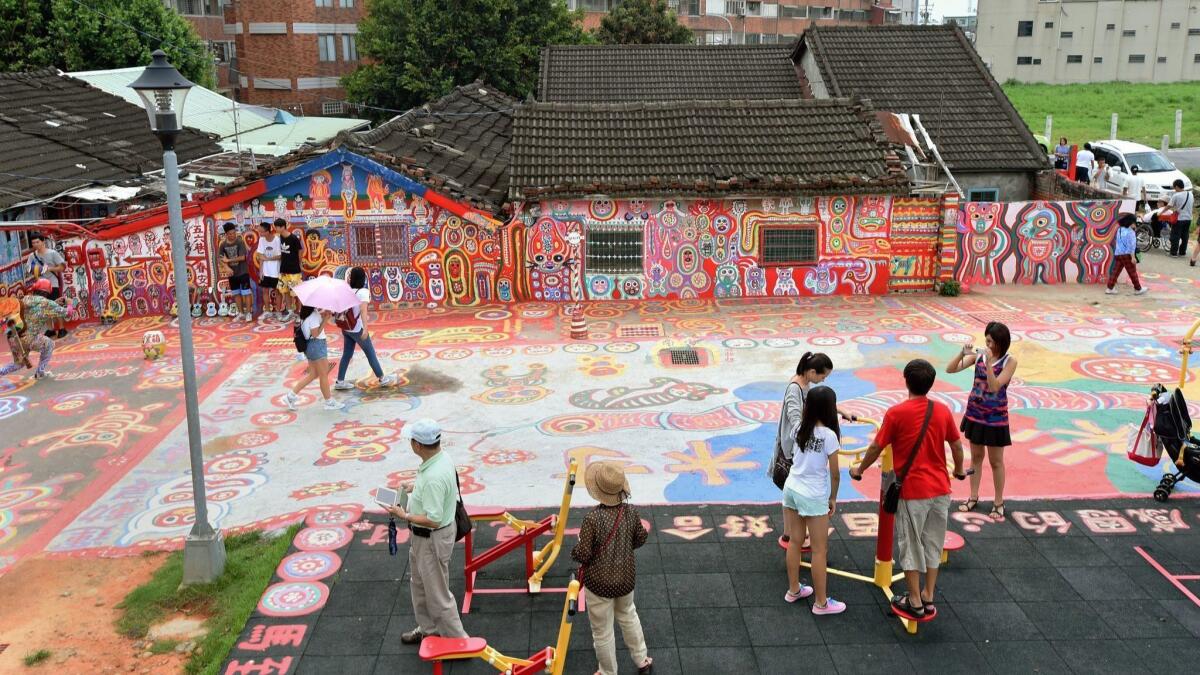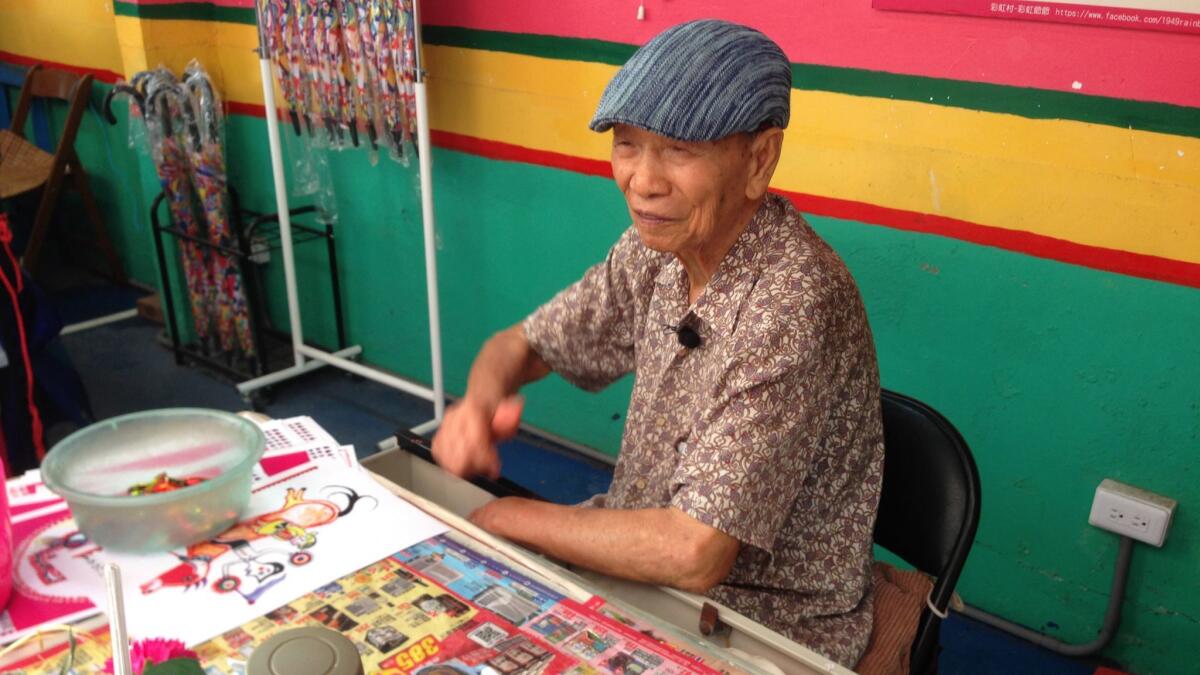How murals are lifting Taiwan villages from economic decline

This quiet hamlet of gray-walled houses is cut off from rail lines and expressways. Many younger people have left to find work, and the elderly get by harvesting oysters from the Taiwan Strait. Empty shells litter the uncut grass along roadsides.
But things began turning around three years ago when Taiwan’s Southwest Coast National Scenic Area Administration hired a mural artist. Agency officials knew Haomei needed a lift and figured that fresh new murals might stimulate tourism.
The artist, Tseng Chin-cheng, 50, lives near the village and runs an art studio but also creates giant outdoor works. In Haomei, he has painted a series of colorful, almost lifelike seascapes on the outer walls of private houses and the ground in public spaces.
The murals have brought more than color to the village. They have helped revive it. No wonder 90 other villages in Taiwan are doing the same thing, in most cases with private funding.
On weekends, Haomei now draws a couple thousand sightseers a day to gaze upon and photograph the murals, which are painted so as to have a 3D-style effect.
Some drive for hours from more populous parts of Taiwan to view the murals and experiment with photos. Most of the attractions are seascapes, but there’s also a painted fairy tale forest and a giant slobbering poodle.
The once-moribund village of just 2,000 residents hopes to bring in thousands more tourists, said Shih Sheng-ming, a Haomei native who returned three years ago from the capital, Taipei, to open a coffee stand along a pedestrian route that leads to most of the murals.

“Not every villager supported this art project at first, but as people started to come in for sightseeing, some of the elders would say, ‘Wow, that’s interesting,’ ” said Shih, 30, who previously worked in a machinery factory and as a business consultant. Some tourists like Haomei’s murals so much they come through with their cameras every week from hometowns two counties away, he said.
Haomei, like the other villages, is looking to the murals to revive or diversify otherwise slow rural economies by attracting day trippers.
“The drawings aren’t just for beauty, they’re to let people come in and give the villagers some opportunities for business, like selling drinks or locally specialized farm products,” said Wu Chun-chieh, the Southwest Coast National Scenic Area Administration’s director for the Haomei region. “They also go and look at the nearby sights such as the temples.”
The murals help attract additional customers to two drink shops that are open weekends and three stores that sell products made from oysters.
Without a new draw, some villages would have to survive almost solely on farming or fishing. About 5% of Taiwanese depended on agriculture for a living in 2016, but environmental rules, natural disasters and domestic appetite for imported food have hurt income. Agriculture’s share of the Taiwan economy has fallen from 7.7% in 1981 to 2%.
The mural trend started on the outskirts of the central Taiwan city of Taichung in 2008. Resident Huang Yung-fu, now 96, began painting over part of a former soldier-occupied village that was being surrounded by urban sprawl. His full-color art on walls, floors and roofs resulted in 11 of its 1,200-plus single-story houses being saved from demolition after tourists began arriving by the busload.
Huang is the oldest of three siblings and, as he was growing up, worked for his father in restaurants. The former cook and soldier always liked drawing but didn’t have much time or opportunity for that endeavor until 2008. He still paints at the village, leaving the houses, and the spaces between them, covered with vibrantly colored animals, vehicles, dolls and cartoon characters. The place is nicknamed “Rainbow Village.”


Before the village artwork took off, “sometimes when people asked me, I would draw pictures for them,” he recalled. “As a cook, I would also draw on my day off. It brought in business, more people came to eat our food, and we made money.”
Huang noted: “If I didn’t paint this village, they would’ve destroyed it.”
Japanese tourist Daiichi Ueda wondered at first whether Rainbow Village was worth a visit after seeing it listed in a guidebook. There’s little to see in the surrounding city, he said. “Now I really can say this place is worth coming here,” said Ueda, 24.
“In Japan there’s no place like this,” he added. “I heard one old person made this place, and after I came, I couldn’t believe just one person made it.” He was “really impressed,” Ueda said. “So many themes and so many pictures.”
A lot of the estimated 5,000 to 8,000 visitors per day take photos with Huang, who waits for them at a desk next to the gift shop, and collects tips. Visitors who stay into the night can sometimes watch Huang paint; he prefers working when there are not large crowds.
In another village, Hujia in southern Taiwan, three sisters started painting the walls of buildings in 2014 with cartoon figures, imitating local creators as well as Western fairy tale characters. They were visiting their grandmother in the farming village of about 1,400 people when they hatched the idea for the murals.
Their work inspired other villagers to add their own murals, which cover the walls of about 40 houses today. Now they get tourists daily from around Taiwan as well as Hong Kong and mainland China. Hundreds visit each weekend, an official in the surrounding district’s government office said.
Villages now effectively compete for mentions in guidebooks and references from travel agencies.
“Lots of people wanted to imitate us, but in the end a lot of villages have gone quiet,” said Wei Ting-chi, who works for the Taichung village’s management company, which operates a gift shop. “This one has its story and special character. The people who come here see it as a cultural attraction.”
Jennings is a special correspondent.
More to Read
Start your day right
Sign up for Essential California for news, features and recommendations from the L.A. Times and beyond in your inbox six days a week.
You may occasionally receive promotional content from the Los Angeles Times.






